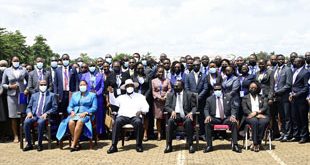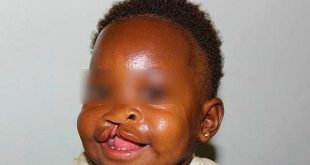
Kampala, Uganda | THE INDEPENDENT | Countries with high malaria prevalence have been advised to develop and implement national plans for insecticide-resistance monitoring and management in order to curb the growing threat of insecticide resistance in malaria control.
This is according to the annual World Malaria Report published this morning by the World Health Organization (WHO).
The report gives an update on how countries are performing regarding prevention and control of malaria by looking into key areas ranging from testing, investment in malaria research, disease surveillance, delivery of malaria commodities and access to care.
It shows that of the 81 malaria endemic countries that provided data for 2010–2018, resistance to at least one of the four insecticide classes in one malaria vector from one collection site was detected in 73 countries, an increase of five countries compared with the previous reporting period 2010–2017. In 26 countries, resistance was reported to all main insecticide classes.
The report also shows that resistance to pyrethroids, the only insecticide class currently used in bed nets is widespread, detected in at least one malaria vector in more than two-thirds of the sites tested and was highest in malaria-endemic countries of sub-Saharan Africa.
Urging countries to come up with concrete sustainable ways of curbing resistance, the report notes that in 2018, 45 countries reported having completed plans for resistance monitoring and management and 36 were currently in the process of developing them.
Apart from resistance, the organization also notes that more countries are reporting gene deletions which means that the malaria rapid diagnostics test (RDTs) are misleading people in treatment since with deletion even when a person is positive, the test comes out negative.
To be able to solve this they are recommending that countries with reports of pfhrp2/3 deletions or neighbouring countries should conduct representative baseline surveys among suspected malaria cases to determine whether the prevalence of these gene deletions causing false-negative RDT results has reached a threshold of 5 per cent to necessitate a change in the type of RDT used.
In contrast, the report identified several global malaria success stories, with more than half of all countries now malaria-free and another 49 countries registering less than 10,000 cases. Timor Leste, Iran and Malaysia recorded zero cases of malaria for the first time in 2018, an achievement China and El Salvador also attained for the second consecutive year.
Over the past two years, four countries have been certified as malaria-free, and more countries than ever are now within reach of elimination. This progress puts the world on track for at least 10 countries to reach the 2020 elimination milestone of the global malaria strategy.
Two of the highest burdened countries also reported significant reductions in malaria cases between 2017 and 2018, with Uganda and India reporting 1.5 million and 2.6 million fewer cases respectively. The Greater Mekong Sub region has recorded a 76 per cent fall in malaria cases between 2010 and 2018 and deaths plummeted by 95 per cent.
Overall, however, the report shows an estimated 412 million RDTs were sold globally in 2018 and a total of 578 million insecticide-treated mosquito nets were reported by manufacturers as having been delivered globally between 2016 and 2018, with 50 per cent going to Côte d’Ivoire, the Democratic Republic of the Congo, Ethiopia, Ghana, India, Nigeria, Uganda and Tanzania.
*****
URN
 The Independent Uganda: You get the Truth we Pay the Price
The Independent Uganda: You get the Truth we Pay the Price


